| Holophrya discolor; focus plane on the contractile vacuole (CV), the macronucleus (Ma) and the oral basket (OB). Interesting is the distribution of the diet particles around the macronucleus. |
| |
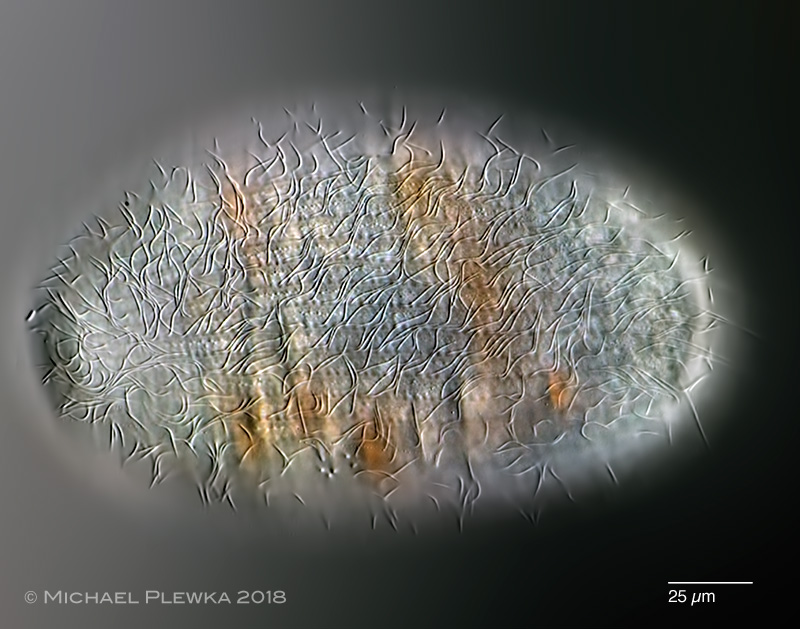 |
| Holophrya discolor; focus plane on the ciliature / striped pattern of the cortex. The anterior part of the specimen in this and the next image is on the left side. The number of ciliary rows is between 35-64, which is in contrast to Holophrya teres (number of ciliary rows: 80-110) |
| |
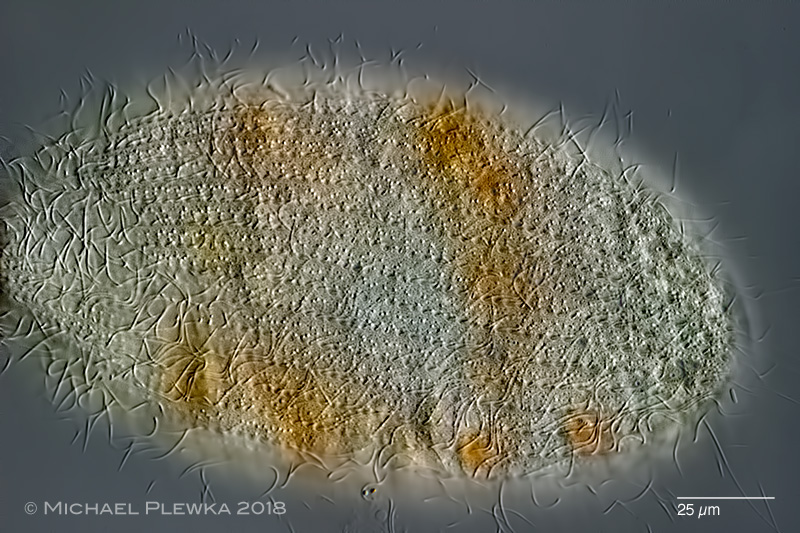 |
| Holophrya discolor; focus plane on the cortex, which has a very complex structure when observed by DIC. |
| |
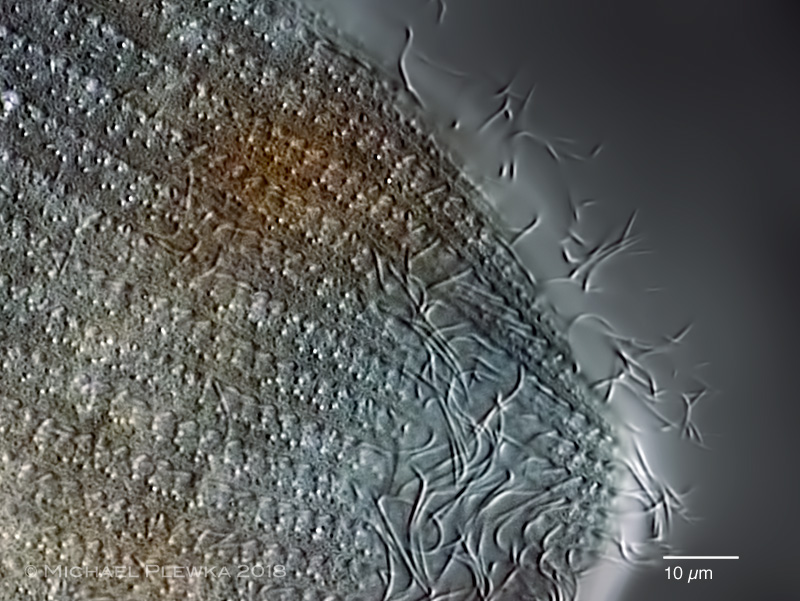 |
| Holophrya discolor; detail aspect of the complex structure of the anterior part of the cortex. No oral brush could be detected. |
| |
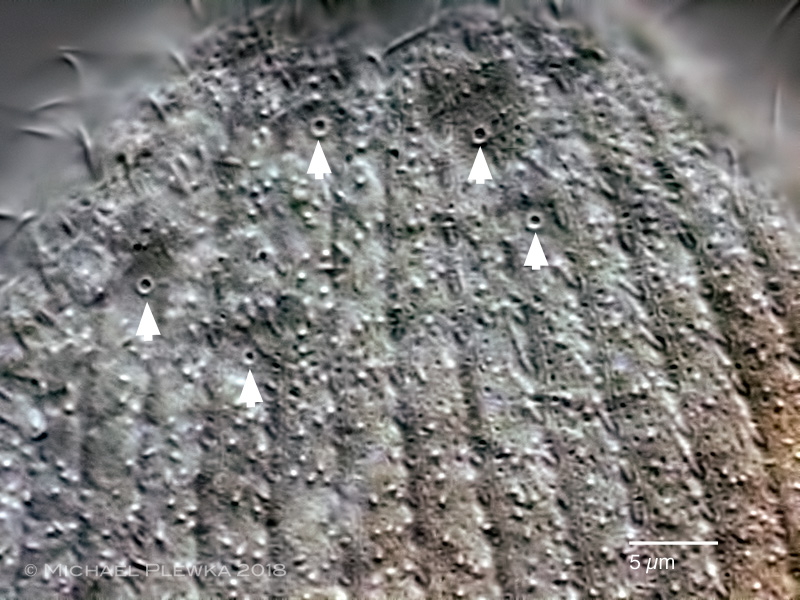 |
| Holophrya discolor; detail aspect of the posterior part of the cortex. The arrowheads point to some of the excretion pores of the contractile vacuoles. |
| |
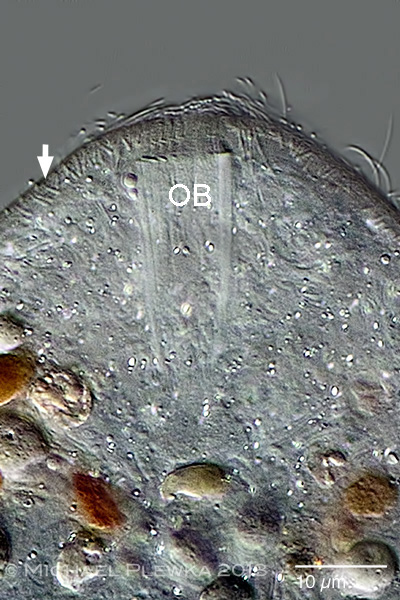  |
| Holophrya discolor; two images of the oral basket(OB) of the same specimen. The difference between the two images is the orientation relative to the orientation of the polarized light of the DIC, which is approx. 90 degrees apart. This suggests that the oralbasket of the specimen consists of birefringent molecules. The arrow in each image points to some of the extrusomes. |
| See also >>>> Holophrya teres feeding an Euchlanis rotifer |
| |
| Species identification courtesy of Bruce Taylor: "It Came from the Pond" |
| |
| Location: Mariaveen near Griendsveen/ NL, Sphagnum pond |
| Habitat: detritus |
| Date:27.11.2018 |
| |
| |
|